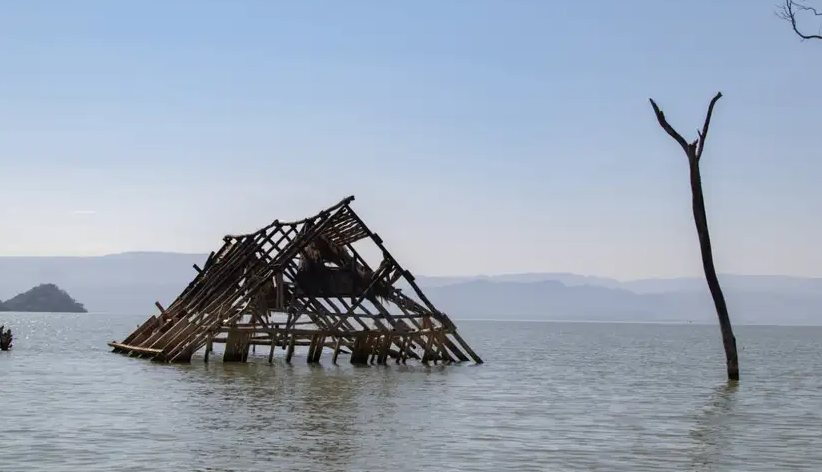
Thousands of people have lost their homes near Lake Baringo, Kenya. (Photo/NewScientist).
By Daisy Okiring
June 9, 2025 | Baringo, Kenya
At first, the water crept in slowly—just a little closer to the doorstep each day. “We thought it would recede, like always,” recalls 42-year-old Teresa Lokor, a mother of five and former farmer from Ng’ambo village near Lake Baringo. “Then one night, the goats were gone, and by morning, so was the house.”
Since 2013, the swelling waters of Lakes Baringo and Bogoria have submerged more than 20 schools and dozens of homes. By 2022, more than 5,000 households had been displaced in Baringo County alone, according to county disaster records. These are the climate refugees of Baringo—families rendered homeless not by war, but by rising waters and failed rains.
And they are not alone.
A crisis below the radar
Unlike the sudden, media-grabbing disasters of typhoons or earthquakes, Baringo’s crisis unfolds slowly, almost invisibly. But its impact is crushing.
According to the Baringo Climate Risk Profile, droughts have doubled in frequency—from four per decade in the 1980s to eight per decade in the 2000s. In 2023, over 72,000 people in the county required humanitarian food aid due to failed crops and livestock deaths.
Also Read: Inside the Sh18 billion project tearing UoN apart
Agriculture, which sustains 80% of Baringo’s population, is collapsing under the weight of climate stress. The 2017 drought alone killed 1,500 livestock, and in the same year, 24,000 families needed emergency food relief. Recent floods displaced 300 families and destroyed 37 goats and hundreds of acres of crops.
Food insecurity is worsening. 57% of the county’s population lives below the food poverty line, and 34% of children under five are stunted due to chronic malnutrition.
Climate change hits the margins hardest
For indigenous communities like the Endorois and Ilchamus, climate change has uprooted not just homes but heritage. These groups have long lived in harmony with Baringo’s lakes, depending on fishing, herding, and small-scale farming. But now, they’re being pushed to unfamiliar government lands with no infrastructure, no farmland, and no ancestral roots.
“Climate change has become a cultural threat,” explains Christine Kandie, director of the Endorois Indigenous Women Empowerment Network (EIWEN). “When the water swallowed our shrines and graves, we lost more than property—we lost part of our identity.”
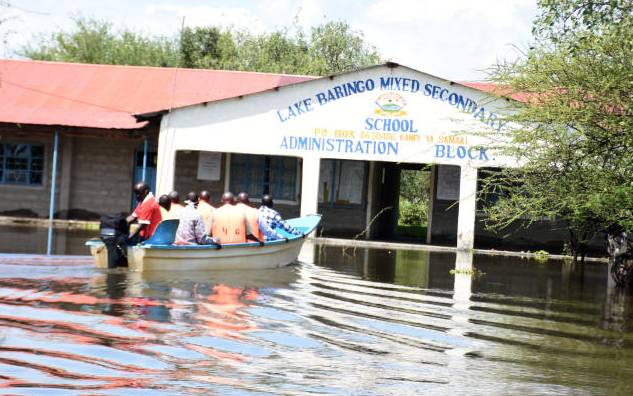
A flooded classroom in Baringo County, one of over 20 schools affected by rising lake waters. (Photo/AP).
A 2023 report by the International Disability Alliance (IDA) revealed that people with disabilities in Baringo face higher risks during evacuation and resettlement. In focus group discussions, one participant shared, “They left me behind during the floods. I had no wheelchair, no one to carry me. My home disappeared while I sat waiting.”
The report also found that shelters were often inaccessible, with no ramps or proper sanitation. Healthcare and food assistance systems frequently overlook people with disabilities, leading to worsened conditions and heightened vulnerability. Those with disabilities reported challenges in securing employment or accessing land, further deepening cycles of poverty and exclusion.
Also Read: Kenya’s soil crisis is Africa’s warning to restore the earth
Women with disabilities face unique burdens. Many are expected to care for children, cook, and manage households even in displacement, while also navigating unsafe shelter conditions and social discrimination. One interviewee said, “We are told we are a burden, but we fetch water and cook in camps like everyone else. Sometimes more.”
Weather as a weapon: The new conflict
As rains fail and lakes rise, the search for pasture and water has intensified historical tensions. Inter-communal conflict has become more frequent, with violent clashes in 2023 between pastoralist groups attributed to shrinking grazing land and dwindling water points.
The National Drought Management Authority warns that without urgent interventions, climate-fueled resource conflicts will escalate further. “This is not just about climate anymore,” says NDMA’s county coordinator. “It’s about peace.”
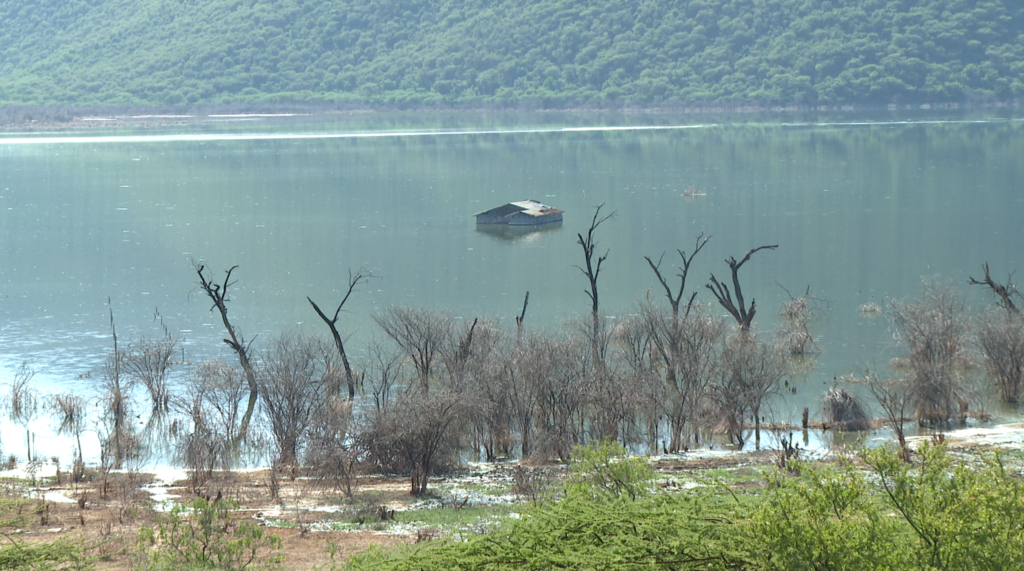
Submerged land that once held family grazing fields and sacred sites. (Photo/Big3Africa).
Who is responding—and is it enough?
The Kenyan government, through the Kenya Climate-Smart Agriculture Project and the National Climate Change Action Plan, has initiated resilience strategies like irrigation schemes, climate information services, and seed subsidies. Local actors such as the Baringo County Government have developed the Climate Change Action Plan 2023–2027, aiming to mainstream climate adaptation in policy and public spending.
Organizations such as the World Food Programme are supporting emergency food relief. The Kenya Red Cross continues to assist with shelter and disaster response. The African Development Bank has funded long-term adaptation projects, and the United Nations Framework Convention on Climate Change supports local adaptation through planning frameworks and funding access.
Read More: Beyond transport, bicycles are lifelines in rural Kenya
Still, challenges persist. County data shows that only 14 percent of households have access to piped water. Most people rely on open streams, boreholes, or polluted surface water. Electricity access remains below 50 percent, and female-headed households—among the most vulnerable—are often overlooked in planning. Inclusion in programs remains inconsistent, particularly for marginalized and indigenous populations.
For people like Teresa Lokor, these plans are not always visible. “I just want land to plant again,” she says. “We don’t want pity. We want a future.”
What comes next for Baringo’s climate refugees?
Rebuilding lives on unfamiliar ground is not just a question of aid—it’s about dignity. Families like Teresa Lokor’s now live in makeshift shelters, far from their fields and animals. Her daughter, 11-year-old Jane, has not been in school for months. The nearest one was submerged. “I want to be a nurse,” she whispers. “But how can I learn when there’s no class?”
Despite these struggles, communities are not giving up. In East Pokot, pastoralists are adopting hardier goat breeds and building water pans. Women’s cooperatives are forming climate adaptation savings groups. Youth groups are piloting tree planting initiatives and beekeeping.
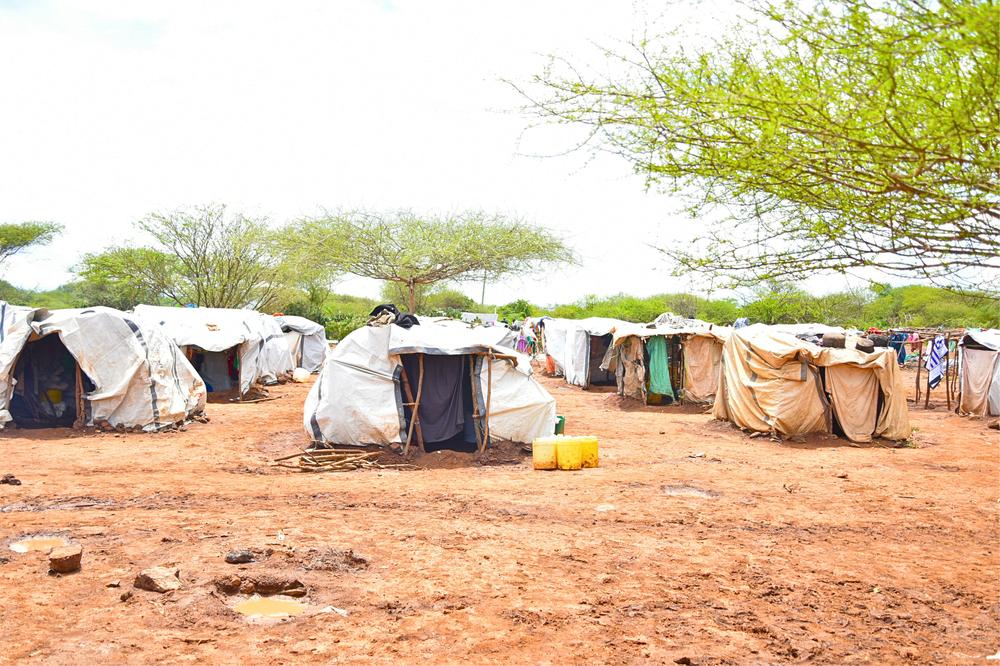
Plastic-sheltered camps in Baringo, where climate-displaced families await government support. (Photo/MSF).
But for adaptation to truly work, it must be inclusive, equitable, and long-term. As the IDA report concluded, “Climate action that excludes people with disabilities, women, and indigenous voices is not just ineffective—it is unjust.”
The climate crisis is not a distant threat for Baringo—it is a daily reality. Yet, its victims are not only numbers or cases. They are mothers, students, elders, and herders. They are citizens with dreams, knowledge, and rights.
Award-winning journalism doesn’t just inform—it uplifts unheard voices and presses for change. And Baringo’s story demands both.
As Teresa Lokor puts it, “We may have lost our homes, but we have not lost our voice. Let the world hear us.”

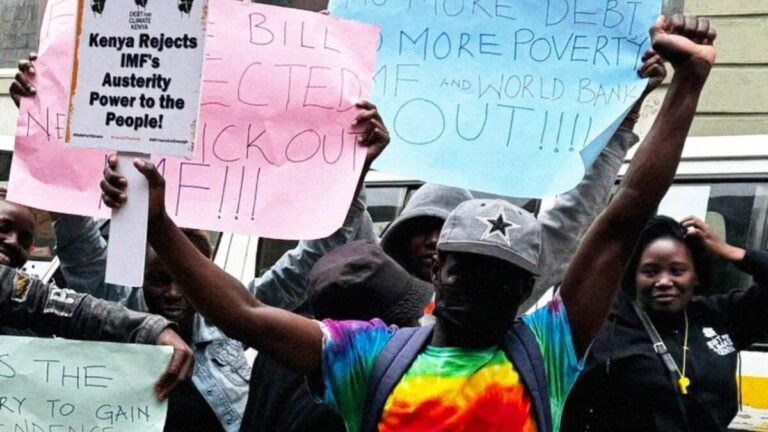
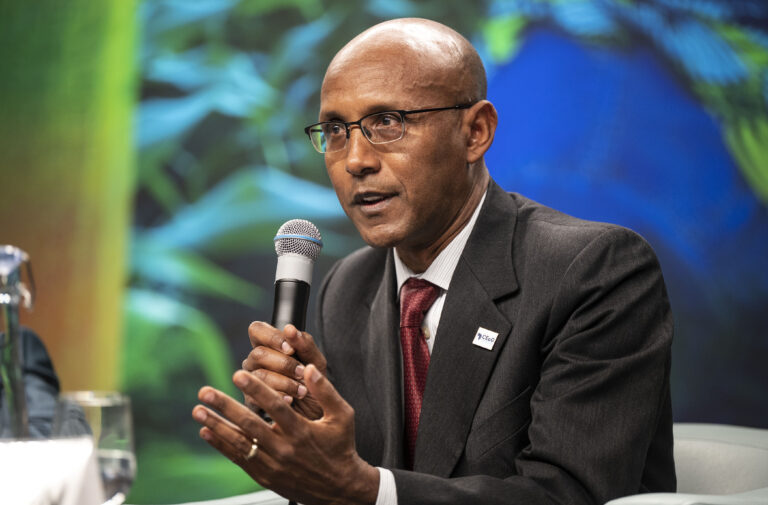

2 thoughts on “Vanishing villages: The human cost of climate change in Baringo”
Comments are closed.